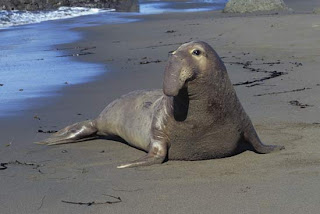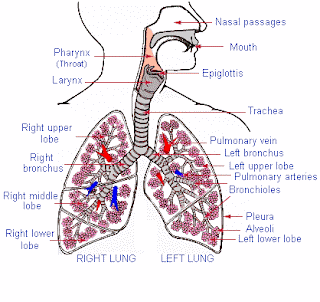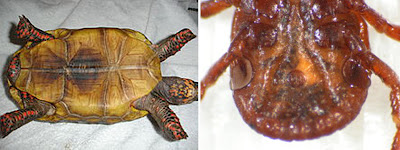Biology concepts – respiration, aerobe, anaerobe, CAM plants, plastron respiration, cutaneous respiration
Surrounded by the bubble, they can oygenate their tissues via the breathing holes on the sides of their bodies (spiracles). This allows them to be underwater for nearly an hour and still be breathing. New research in ticks shows that the plastron (flat portion under the abdomen) is capable of some gas exchange itself via the air trapped by the hydrophobic hairs on the abdomen.
Next week, another question to ponder. Just how many species call Earth home?
Gengenbacher, M., & Kaufmann, S. (2012). Mycobacterium tuberculosis: success through dormancy FEMS Microbiology Reviews, 36 (3), 514-532 DOI: 10.1111/j.1574-6976.2012.00331.x
Fielden, L., Knolhoff, L., Villarreal, S., & Ryan, P. (2011). Underwater survival in the dog tick Dermacentor variabilis (Acari:Ixodidae) Journal of Insect Physiology, 57 (1), 21-26 DOI: 10.1016/j.jinsphys.2010.08.009
Williams, T., Zavanelli, M., Miller, M., Goldbeck, R., Morledge, M., Casper, D., Pabst, D., McLellan, W., Cantin, L., & Kliger, D. (2008). Running, swimming and diving modifies neuroprotecting globins in the mammalian brain Proceedings of the Royal Society B: Biological Sciences, 275 (1636), 751-758 DOI: 10.1098/rspb.2007.1484
Question of the Day – what living thing can hold its breath the longest?
The world’s record for holding one’s breath (voluntarily) was set in May, 2012 by Denmark’s Stig Severinsen. Even though it wasn’t technically cheating, he did hyperventilate with almost pure oxygen for 19 minutes before he then held his breath for an amazing 22 minutes and 0 seconds!
Hyperventilation works by reducing the CO2:O2ratio in your blood. CO2 concentration is measured by sensors in your large blood vessels. Signals are sent to the brain to increase the breathing rate if there is too much CO2 in the blood or to reduce the breathing rate if the pCO2 is too low. By breathing fast and breathing pure O2, there will be less CO2 in the blood and your brain will tell you to stop breathing until the pCO2 increases to normal levels.
Stig said he used two mental tricks to increase the time he can hold his breath. One is scientifically valid; biofeedback allows Stig to slow his own body activity. By concentrating on his heartbeat, Stig has learned to stimulate neural pathways to reduce his cardiac output and his overall metabolism rate -lower metabolism and heart rate - less need for oxygen. His second technique? He thinks about dolphins.
Twenty-two minutes seems like a long time; indeed, this feat required arduous training by Stig. In truth, 22 minutes isn’t very long at all. In fact, humans are weenies when it comes to going without oxygen. Lots of animals can hold their breath longer than we can.
Sperm whales and elephant seals are the banner carriers for the marine mammals in our contest. Sperm whales can submerge for more than two hours, while elephant seals may stay under water for an hour or more. Being mammals, they have physiology very similar to humans in some respects, but they do have modifications that allow for the long submersions.
Whales and seals have more blood than humans do – duh! Even compared pound for pound, they have 3x as much blood. More blood means more oxygen carrying capability. They also have increased oxygen carrying proteins in their blood and tissues. In addition, they can reduce their metabolism in all but the most necessary organs, and they can divert their blood to just these organs.
New research shows that marine mammals also have oxygen carrying proteins in their brains, called neuroglobin and cytoglobin. So, while blood levels of oxygen may plummet when diving, the brain remains oxygenated.
Sea turtles and crocodilians are examples of reptiles that can hold their breath for amazing lengths of time. Aligators and crocodiles can stay submerged for a couple of hours, while a Galapagos sea turtle can easily stay underwater for 4-7 hours, depending on its level of activity. Maybe they think about Stig in order to stay submerged longer.
Sea turtle hibernation is controversial, but some freshwater turtles do just that. They can stay submerged for weeks or perhaps months at a time! But many turtles cheat at our contest, they have a bimodal respiratory system, through their lungs and through their skin. Cutaneous gas exchange is apparent in all freshwater turtles to some degree, but it is much more efficient in some soft shell turtles, according to a 2001 study.
Let’s look at a different type of reptile. The Belcher’s sea snake (Hydrophis belcheri) is the most venomous snake on the face of the Earth, or under it, as the case may be. It is a sea snake that can remain submerged for 7-8 hours. Sea snakes like H. belcheri have a single lung that runs almost the entire length of their body, and their trachea can also transfer oxygen to the blood. This reduces the “dead space” in their respiratory system and allows them to absorb more of the oxygen they inhale.
Humans, as a comparison, only absorb about 15% of the oxygen in each breath, partly because the gas exchange takes place only in the alveoli (terminal air sacs). Oxygen in the nose, pharynx, trachea, bronchi, and bronchioles is just exhaled without any chance to be used by the body.However, sea snakes are cheaters as well. Their bodies have been streamlined to help them move through the water. One adaptation in this direction is the complete loss of scales. As a result, these snakes have evolved the ability to exchange some oxygen and carbon dioxide with the water through their skin. So they aren’t really holding their breath when submerged.
Almost all amphibians are cutaneous (skin surface) breathers as well. In air, most amphibians can survive exclusively by exchanging gasses through their skin, and in water, adult gills or rudimentary lungs are supplemented by exchange of gas from the water. Cold water and turbulent water contains more oxygen, so in these environments amphibians can survive indefinitely by garnering oxygen from water.
Indeed, the largest family of salamanders (the plethodontidae), don’t have any lungs at all. They exchange gasses only through their skin and the mucosa surfaces of their mouths. And many of these salamanders are primarily aquatic, they don’t take a breath in their entire lives – but they aren’t holding their breath either.
But none of these animals are the champion breath holders. There are organisms that laugh at holding their breath for a couple of hours. But let’s limit our discussion to those organisms that require oxygen. It’s no fun watching an anaerobic bacterium hold its breath; it doesn’t need oxygen! In many cases, air kills them!
Cockroaches, ticks, and ants do last a long time underwater, just try flushing one. But they can’t win our contest either. They seem to trap a bubble of air as they submerge. They have long hairs on their abdomens that trap air via the surface the surface tension and cohesion of water.
Surrounded by the bubble, they can oygenate their tissues via the breathing holes on the sides of their bodies (spiracles). This allows them to be underwater for nearly an hour and still be breathing. New research in ticks shows that the plastron (flat portion under the abdomen) is capable of some gas exchange itself via the air trapped by the hydrophobic hairs on the abdomen.
We make a big deal about how plants take in carbon dioxide and give off oxygen, and they do during photosynthesis in their chloroplasts. But that’s only half the story. They also have mitochondria that produce ATP from photosynthesis products via oxidative phosphorylation, just like we do.
For plants that grow in hot, dry environments, loss of water is a serious threat. To minimize water loss, some can close the pores in their leaves (stomata), but this also prevents gas exchange, including taking up carbon dioxide and oxygen. The stomata will open only at night, when the temperatures are cooler and water loss would be lost. This is the only time they exchange CO2 and O2 with the environment as well.
CAM (crassulacean acid metabolism) plants can store the carbon dioxide they take in at night in the form of malate. They then can perform photosynthesis even though their stomata are closed. CAM physiology also reduces the amount of O2bound by RuBisCo enzyme instead of CO2. RuBisCo + O2leads to inefficient carbon fixation, so waiting until night time when CO2is relatively more abundant and more soluble will increase photosynthesis productivity. As a result, CAM plants hold their breath for 8-15 hours every day!
But the winners of our lack of oxygen survival contest – bacteria, of course! Bacteria come in many flavors, including those that don’t need oxygen for respiration (chemosynthesizers and anaerobes), those that can take or leave oxygen (facultative bacteria), and those that must have oxygen in order to make ATP (obligate aerobes). Mycobacterium tuberculosis is an example of an obligate aerobe. I talked to Martin Gengenbacher at the Max Planck Institute in Berlin about M. tuberculosis and its survival time without oxygen. He has recently published a great review of M.tuberculosis biology. In a series of experiments that resulted in the development of something called the Wayne model, M. tuberculosis was sealed in a vessel in which they consumed all the available oxygen over time.
However, even after the oxygen was gone, the organisms remained viable for 25 days! They do seem to go dormant, but this dormancy is not the same as ceasing activity completely. It seems that some metabolism and respiration is maintained in the complete absence of oxygen – even though we know that M. tuberculosis absolutely requires oxygen to survive.
These 25 days make M. tuberculosis better than any of our other example organisms at living without gas exchange, though there may be other obligate aerobes that can perform similar feats. But there’s more to the skills of the tuberculin bacterium. In tuberculosis, the body has a difficult time killing off the organism, so it does the next best thing – it walls off the bacteria and traps them in a prison cell of immune cells. These whirls of cells are called granulomas and are very complex structures.
Granulomas are extremely hypoxic (oxygen poor), and M. tuberculosis does undergo dormancy in these structures. But again, Dr. Gengenbacher states that this is a metabolically active dormancy, which would by definition require ATP, and therefore require cellular respiration.
The patient still has TB, but no symptomology. This remains the case until the patient undergoes some form of immunosuppression, some disease or condition that prevents the immune cells from keeping the organism in prison. There have been cases where TB has reactivated some 50 years after the original infection. So – M. tuberculosiscan hold its breath for half a century! We have a winner.
Gengenbacher, M., & Kaufmann, S. (2012). Mycobacterium tuberculosis: success through dormancy FEMS Microbiology Reviews, 36 (3), 514-532 DOI: 10.1111/j.1574-6976.2012.00331.x
Fielden, L., Knolhoff, L., Villarreal, S., & Ryan, P. (2011). Underwater survival in the dog tick Dermacentor variabilis (Acari:Ixodidae) Journal of Insect Physiology, 57 (1), 21-26 DOI: 10.1016/j.jinsphys.2010.08.009
Williams, T., Zavanelli, M., Miller, M., Goldbeck, R., Morledge, M., Casper, D., Pabst, D., McLellan, W., Cantin, L., & Kliger, D. (2008). Running, swimming and diving modifies neuroprotecting globins in the mammalian brain Proceedings of the Royal Society B: Biological Sciences, 275 (1636), 751-758 DOI: 10.1098/rspb.2007.1484





